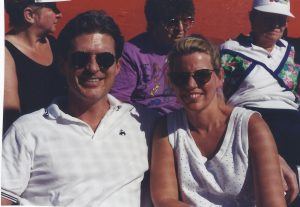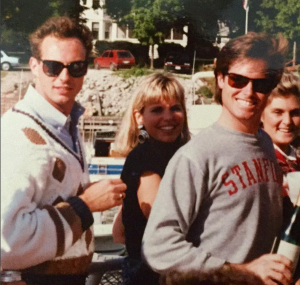
After graduating college, Suz spent approximately 15 years focused primarily on her personal desires and aspirations. With no family to distract her, she was able to maintain a successful cultural model of individualism as described by Andrew Cherlin in his book The Marriage-Go-Round (Cherlin, 31). On the other hand, my father was married, somewhat happily, to another woman for 10 years before meeting my mother. He aimed to make the marriage work as a permanent, loving relationship, which was consistent with Cherlin’s definition of the American cultural model of marriage (Cherlin, 26). Both of my parents had no problems sustaining just one of these cultural modes. My mother had a personally fulfilling life, and my father a dedicated marriage. Cultural pressures, however, led them to desire not just one model, but both. Cherlin notes that this is a cultural idiosyncrasy such that these “contradictory emphases on marriage and individualism [are] found only in the United States,” (Cherlin, 24). Cherlin argues that these two cultural models are inherently antithetical, which in turn leads to cyclical patterns of divorce, but for my parents, this was not the case. To see why, it is important to analyze both of their positions within one cultural mode, and the desires that drove them to pursue both.
SUZ THE BACHELORETTE

Reflecting on her young adult life, two highlights stood out for my mom. “In college, obviously the Pi Phi house, because I’m still close to many many people there. The second would be getting a job at IMG, the sports management company that was founded by Mark McCormick, and I was there at the cutting edge, when it was 10-15 years old as a company.” While her sorority served as a pseudo-family during her college years, her career filled the role of married life through her mid-30’s. Her nostalgic description of her boss and the company’s success reflects the satisfaction that she received from working. Before meeting my father at age 36, Suz had only one serious young-adult relationship, which lasted one year. Otherwise, she was a career-focused bachelorette. Despite her long stint of being single, she noted during her interview that marriage was always inevitable in her mind. When asked if she ever imagined not getting married she joked, “Well when you get married at 37,” then paused, and responded more seriously, “well, no, I never imagined not being married.” Her answer clearly demonstrated the paradox of having both cultural models of marriage and individualism. While the start of her adult life focused on personal growth, it was due to a lack of romantic opportunity that marriage came later, not due to a lack of marital desires. American culture would not support happiness with the fulfillment of only one of these cultural models.
D’S SECOND SWING AT MARRIAGE

My father rarely mentions his first marriage, and the only photos I've seen from this period of his life are of his dogs at the time, Maggie and Albert. I know that his wife was named Christie, and that they met at business school in Boston, but not much more than that. Their marriage was long (10 years) but their divorce was quick, fueled by a lack of personal fulfillment. During his interview, he explained, “There were some fundamental differences in terms of what we wanted from a family, and being with each others families. It reached a point where we weren’t interested in the same things anymore. So while it was a traumatic thing to split up, there wasn’t a major issue or situation that caused it, it just reached a breaking point where it was time to move on.” His motivation to divorce stemming from “no major issue” but rather due to a lack of personal satisfaction represents a break from the cultural model of marriage, which dictates that divorce should be used only as a last resort (Cherlin, 26). Abandoning his first marriage however, did not mean abandoning the marriage all together, because almost immediately after his split from Christie, he met my mother.
“BLIND DATE”

While my dad was separated from his first wife and in the process of filing for a divorce, he was set up on a blind date with a friend of his ex-brother in law, that friend being my mom. He picked her up from her office after work, and while he was waiting in the lobby, my mom sent her colleague down to check him out. At the time, my father wore thick tortoise shell glasses (pictured to the left), so my mother’s first impression of him was her colleagues report that, “with those glasses, he may really be a blind date.” They then went to a restaurant in downtown Cleveland for dinner. Six months later, they would return to this same restaurant for a lunch date and my father would propose. Reflecting on her proposal, my mother explained that, “there were a dozen roses at the table, and daddy was super nervous, and he presented me with a ring and asked if I would marry him. Everyone in the restaurant clapped, it was very cute.” Before their proposal could sound too romantic, she followed up with a laugh and by saying, “then I went back to work.” As strong as their love was, it would in no way hinder their professional nor personal aspirations from the day they were engaged until now. Although my parents were married later than most, this allowed them to perfect the simultaneous fulfillment of marital and individual needs through their specialization based work-family life balance.